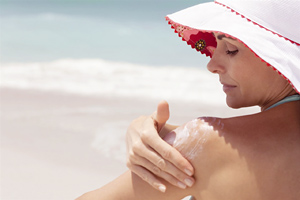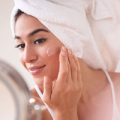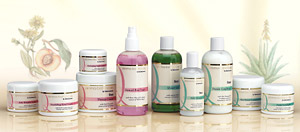7 Sunscreen Myths Dermatologists Want You To Stop Believing
 It’s no secret that sunscreen is essential for protecting our skin from the sun’s damaging rays.
It’s no secret that sunscreen is essential for protecting our skin from the sun’s damaging rays.
Even on a cloudy day, sunscreen is important for helping to reduce early signs of skin aging and skin cancer when used along with other sun protection measures.
However, not everything you hear about sun care is true: there are a number of dangerous sunscreen misconceptions out there that can lead to potential issues for the skin down the road.
To cut through the confusion and help you best protect your skin from the sun’s harmful effects, board-certified dermatologist and Clinical Associate Professor of Dermatology at the New York University Langone Medical Center, Dr. Elizabeth Hale, who has partnered with Coppertone, debunks common sunscreen myths:
Myth #1: All sunscreens are created equal
Truth: To best protect your skin from both UVA and UVB rays, look for the words “broad spectrum” when choosing a sunscreen, which means the product protects from both forms of UV radiation. Opt for a product with a minimum SPF 30, which can help protect you from approximately 97 percent of the sun’s damaging rays, and look for a product that is water-resistant.
Myth #2: Individuals with darker complexions don’t need sunscreen
Truth: Having a darker complexion means more melanin is present in the skin, but this only works to diffuse UV light to a certain extent and doesn’t protect from skin cancer and sun-induced hyper-pigmentation. The sun can cause damage to anyone’s skin, regardless of their complexion, which is why sunscreen is necessary for people of all skin tones and ethnicities.
If the white residue left behind from sunscreen deters you from applying any, opt for Coppertone Sport Clear, a clear sunscreen with a gel-like consistency that goes on clear without leaving any white residue behind. It provides broad spectrum sun protection in SPFs 30 or 50 and is water-resistant (80 minutes).
Myth #3: Cosmetics have enough SPF to keep you protected
Truth: A new wave of makeup products containing built-in SPF are taking over the market, but just because you use these products does not mean you should skip sunscreen for the day. Foundations, powders and other beauty products generally don’t provide adequate protection, so consider them just added insurance. Moreover, since we don’t always reapply our makeup on a regular basis, your skin is vulnerable for the majority of the day. To be safe, be sure to apply actual sunscreen before or after your makeup and reapply throughout the day.
Myth #4: Sunscreen does not expire
Truth: Digging through old beach bags and car trunks for sunscreen might seem cost-efficient, but using an expired sunscreen puts your skin at risk. The active ingredients in most SPF products tend to break down after about three years, and even faster when exposed to high temperatures and direct sunlight, making the ingredients less effective in protecting you from sun damage.
Not all sunscreen products come with an expiration date, so try to keep in mind when the product was purchased, store it indoors and be on the lookout for signs of deterioration, including changes in color, consistency, texture or smell. If you are not applying sunscreen regularly, which you should be, make it a point to restock your sunscreen at least at the start of each summer.
Myth #5: A base tan will prevent sun damage
Truth: To prevent further skin damage our bodies naturally build up melanin, which is what makes us look tanner, but this natural protection is nothing compared to the defense provided by sunscreen. Any form of skin tanning is a sign of sun damage. Just because there are no visible signs of sunburn, UV radiation and unprotected sun exposure can still damage the skin, so always make sure to wear sunscreen and reapply as directed.
Myth #6: If a sunscreen says, “water resistant,” I don’t need to reapply after swimming
Truth: Some performance sunscreens will say “water resistant” on the bottle, which is great. However, even these water-resistant sunscreens need to be reapplied after 80 minutes of swimming or sweating, and immediately after towel drying. Be sure to check your product instructions and use and reapply as directed.
Myth #7: Chemicals in sunscreens should be avoided
Truth: All of the ingredients used in sunscreens have been well-studied and considered to be safe for human use. In fact, while physical sunscreen ingredients like Zinc Oxide and Titanium Oxide are excellent options, the addition of chemical ingredients can help improve the spectrum of protection and make for a better performance sunscreen option. The good news is that there are many options available, so that you can make the choice of what’s best for you.
Having a basic understanding of sun protection and knowing the truth behind common misconceptions is key in safeguarding your skin and reducing your chances of premature skin aging and skin cancer. Along with taking additional measures to protect the skin, such as wearing a protective hat or coverup and minimizing time in the sun when it’s the strongest, applying sunscreen as directed plays a vital role in keeping you and your loved ones’ skin protected and healthy.
For more information on sun protection, visit www.coppertone.com.
Article Copyright © BPT 2019 ![]()































